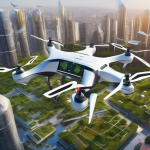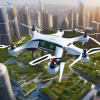The Evolution of Digital Twins: What You Need to Know
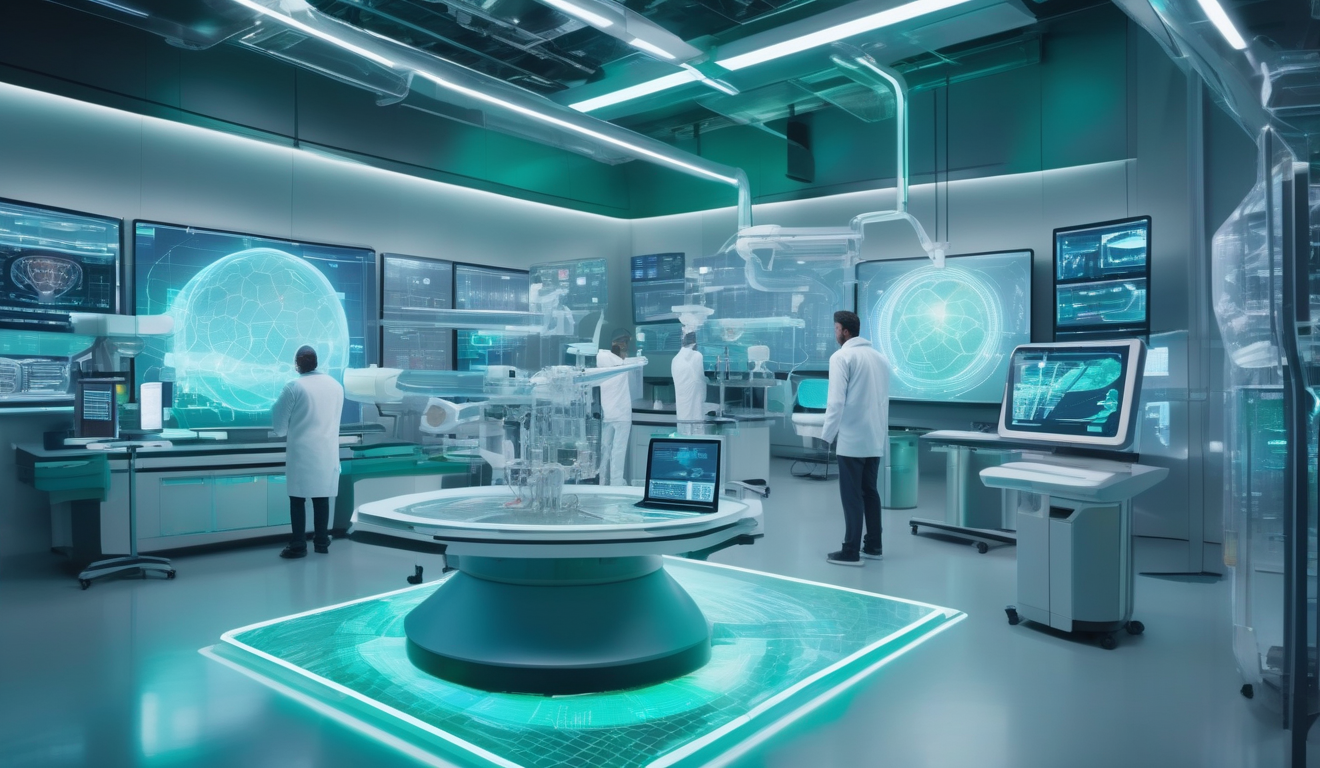
In today’s fast-paced world, the concept of digital twins has emerged as a revolutionary force across various industries. But what exactly are digital twins? At their core, they are virtual replicas of physical entities, allowing for real-time monitoring and simulation. Imagine having a digital version of your car that can tell you exactly when it needs maintenance, or a virtual model of a city that helps urban planners visualize changes before they happen. This is the transformative potential of digital twins, and understanding their foundational principles is essential for grasping how they are reshaping our world.
The journey of digital twins began in the early 2000s, and it’s fascinating to see how they have evolved over the years. Initially, they were primarily utilized in manufacturing and aerospace, where they proved invaluable for enhancing efficiency and predictive maintenance. As technology advanced, the applications of digital twins expanded, paving the way for their integration into sectors like healthcare, where they are now making waves by modeling patient data and predicting outcomes.
Digital twins operate on the principle of creating a dynamic digital representation of a physical object or system. This representation is not static; it evolves in real-time as the physical counterpart changes. The ability to monitor and simulate these changes offers immense benefits, particularly in terms of predictive analytics and operational efficiency. For instance, in manufacturing, a digital twin can monitor equipment performance and alert operators to potential failures before they occur, minimizing downtime and saving costs.
Tracing the historical development of digital twins reveals a fascinating narrative of technological innovation. The early applications in manufacturing and aerospace laid a strong foundation, showcasing their value in enhancing efficiency and reliability. As industries began to recognize these benefits, the adoption of digital twins spread like wildfire, leading to their current prominence in sectors such as healthcare.
Initially, digital twins found their footing in two key areas: manufacturing and aerospace. These early applications showcased their potential in:
- Manufacturing: Real-time monitoring of production processes.
- Aerospace: Simulating aircraft performance for safety and reliability.
As these industries embraced digital twins, the groundwork was laid for broader adoption across various sectors, highlighting the immense value they offer in optimizing operations and improving outcomes.
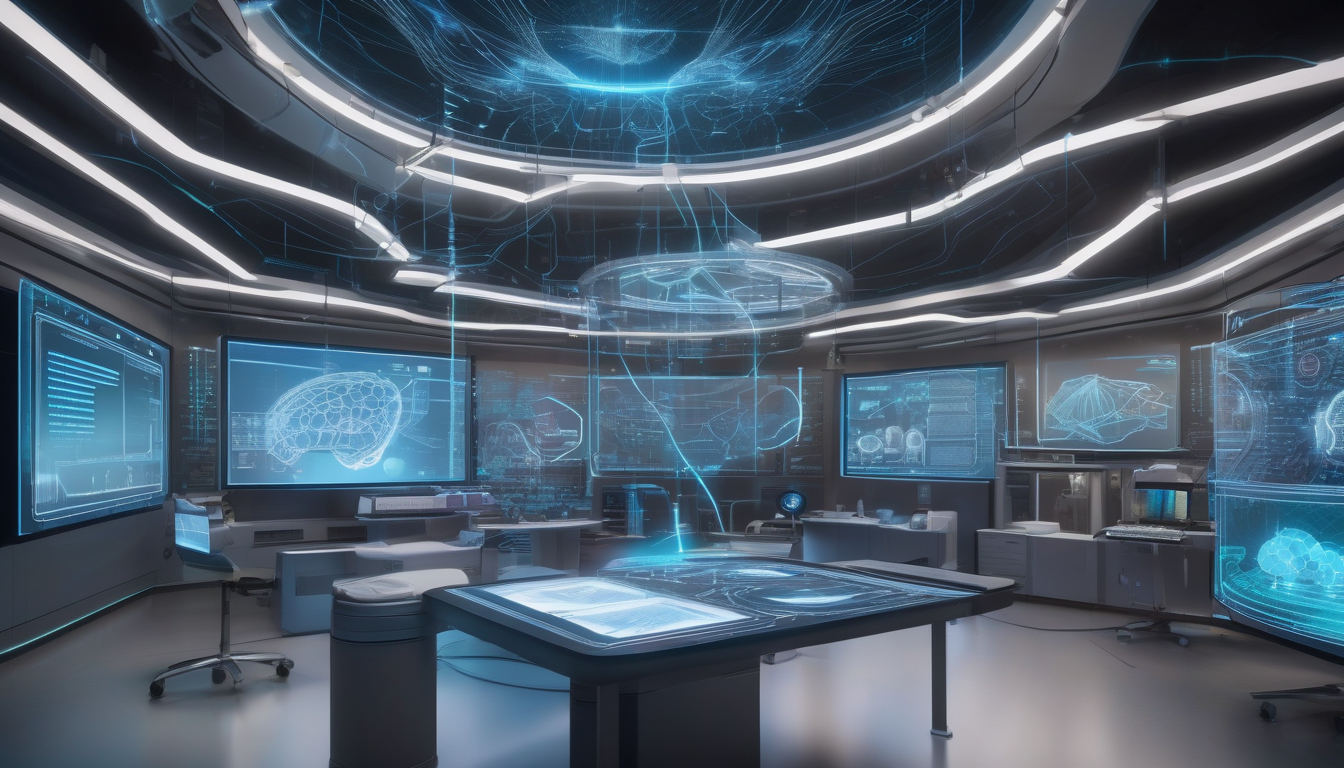
The Concept of Digital Twins
Digital twins are not just a buzzword; they are revolutionary virtual replicas of physical entities, designed to mirror the real world in real time. Imagine having a digital version of everything from a jet engine to a human heart, allowing professionals to monitor, analyze, and optimize performance without ever touching the physical object. This concept is crucial for understanding how industries can harness technology to enhance efficiency and innovation.
The foundational principles of digital twins revolve around three key elements: real-time data, simulation capabilities, and predictive analytics. These elements work together to create a comprehensive model that not only reflects the current state of the physical entity but also predicts future behavior and performance.
Real-time data collection is the lifeblood of digital twins. Sensors embedded in physical objects gather data continuously, feeding it into the digital model. This allows for immediate insights into how the object is functioning. For instance, in a manufacturing setting, a digital twin can track machine performance, identifying issues before they lead to costly downtimes.
Simulation capabilities are another vital aspect. By using advanced algorithms, digital twins can replicate various scenarios, allowing engineers and decision-makers to test changes without the risk of real-world consequences. This is akin to playing a video game where you can experiment with different strategies to see which one yields the best results.
Finally, predictive analytics takes the data and simulations a step further. By analyzing trends and patterns, digital twins can forecast future outcomes, enabling proactive decision-making. For example, in healthcare, a digital twin of a patient can help doctors anticipate potential health issues, leading to timely interventions and personalized treatment plans.
In summary, the concept of digital twins is a game-changer across various sectors. They empower organizations to not only understand their physical assets better but also to optimize their performance and predict future challenges. As we delve deeper into this technology, the potential applications are limited only by our imagination.
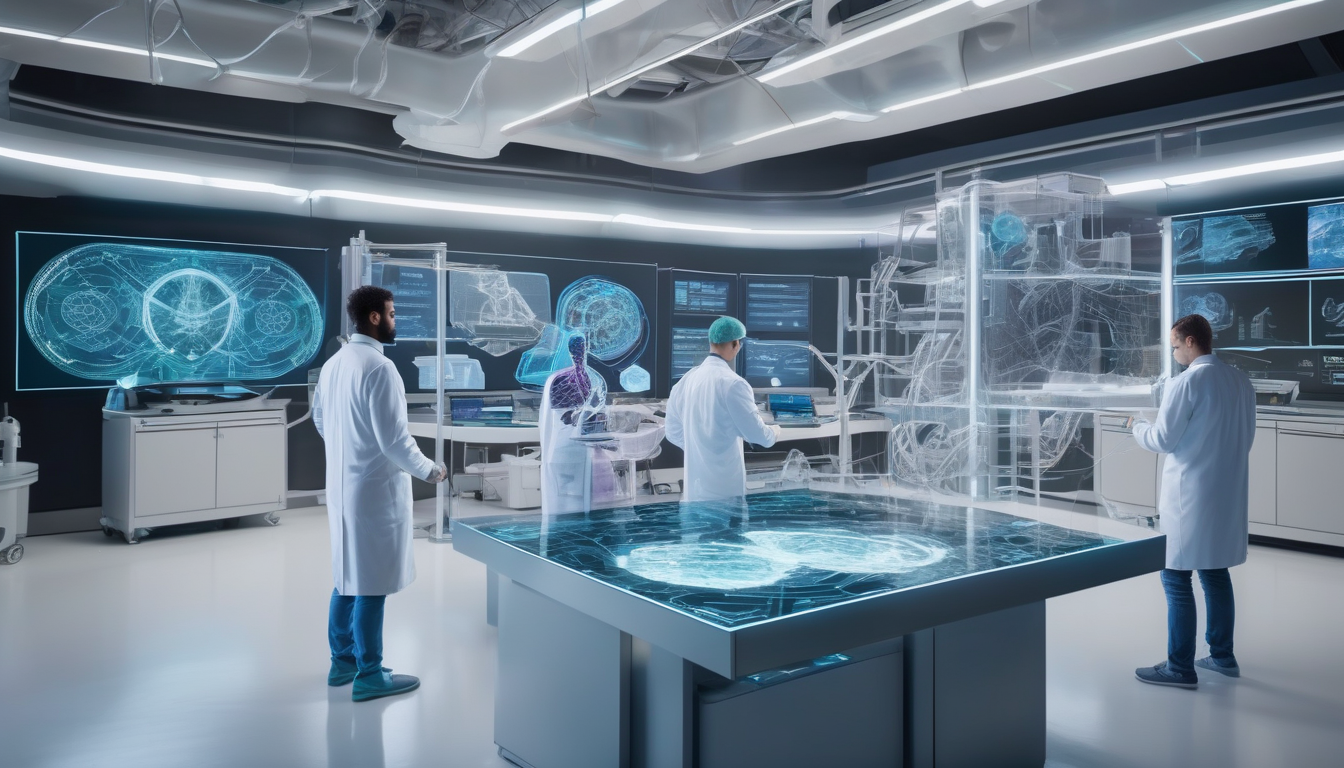
Historical Development
The evolution of digital twins is a fascinating journey that began in the early 2000s. Initially, the concept emerged from the need to create virtual models that could mirror physical systems, allowing for enhanced monitoring and analysis. As industries began to recognize the potential of these digital counterparts, their applications expanded rapidly, paving the way for innovations that have significantly impacted various sectors.
In the early days, digital twins were primarily utilized in manufacturing and aerospace. These sectors were quick to adopt the technology due to their complex systems and the critical need for efficiency. The initial applications focused on improving operational processes and predictive maintenance, which laid the groundwork for broader adoption across industries. For instance, in manufacturing, digital twins helped companies to:
- Monitor production lines in real-time
- Reduce downtime through predictive maintenance
- Optimize resource allocation for better efficiency
Meanwhile, in the aerospace industry, engineers began using digital twins to simulate aircraft performance. This not only enhanced safety and reliability but also allowed for more effective maintenance schedules by predicting potential failures before they occurred. The success in these early applications showcased the transformative potential of digital twins, leading to their adoption in sectors like healthcare, urban planning, and energy management.
As technology progressed, advancements in data analytics and cloud computing further propelled the development of digital twins. The integration of these technologies allowed for more sophisticated simulations and real-time data processing, making digital twins even more relevant in today’s digital landscape. This evolution has not only changed how industries operate but has also set the stage for the future of digital innovation.
In summary, the historical development of digital twins reflects a continuous journey of technological advancement. From their humble beginnings in manufacturing and aerospace to their current applications in healthcare and beyond, digital twins are now at the forefront of revolutionizing how we understand and interact with physical systems.
Early Applications
Initially, digital twins found their footing in the realms of manufacturing and aerospace. These sectors were the pioneers in utilizing this innovative technology, effectively laying the groundwork for broader adoption across various industries. Imagine a digital mirror reflecting the intricate processes of a factory or the complex mechanics of an aircraft; that’s the essence of a digital twin. By creating virtual replicas of physical systems, organizations could monitor performance in real-time, significantly enhancing their operational efficiency.
In manufacturing, for instance, digital twins have revolutionized production processes. They allow engineers to visualize every step of the manufacturing line and identify potential bottlenecks before they escalate into costly downtime. This proactive approach not only minimizes interruptions but also optimizes resource allocation. Companies have reported that implementing digital twins has led to a remarkable 30% increase in productivity and a substantial reduction in operational costs.
Similarly, in the aerospace sector, the application of digital twins has been nothing short of groundbreaking. Engineers use these virtual models to simulate aircraft performance, which enhances safety and reliability. By predicting potential failures before they occur, maintenance schedules can be adjusted accordingly, ensuring that aircraft remain in optimal condition. This predictive maintenance strategy has proven to be a game-changer, reducing maintenance costs by up to 25% while improving flight safety.
The early applications of digital twins showcase their immense potential and value. As industries recognized the benefits of real-time monitoring and data-driven decision-making, the stage was set for further advancements. The initial successes in manufacturing and aerospace paved the way for digital twins to expand into other fields, including healthcare, where their transformative power is now being fully realized.
Manufacturing Innovations
In the fast-paced world of manufacturing, innovations are not just welcomed; they are essential for survival. One of the most groundbreaking advancements in this field is the implementation of digital twins. These virtual replicas are revolutionizing how manufacturers approach production processes. Imagine having a digital version of your entire factory that can simulate every aspect of production in real time. This capability is not just a fantasy; it’s a reality that is reshaping the industry.
Digital twins allow manufacturers to monitor their operations continuously, analyzing data as it flows in. This real-time monitoring helps in identifying inefficiencies and bottlenecks that could slow down production. By leveraging predictive analytics, manufacturers can foresee potential issues before they escalate into costly downtime. For instance, if a machine is showing signs of wear and tear, the digital twin can alert the maintenance team to take action before a breakdown occurs. This proactive approach leads to significant cost savings and boosts overall productivity.
Moreover, the integration of digital twins in manufacturing facilitates better resource allocation. By simulating different scenarios, manufacturers can optimize their supply chains, ensuring that materials are available when needed without overstocking. This not only reduces waste but also enhances the efficiency of the production line. The following table illustrates the benefits of utilizing digital twins in manufacturing:
| Benefit | Description |
|---|---|
| Cost Savings | Minimizes downtime and reduces waste through predictive maintenance. |
| Increased Efficiency | Optimizes production processes by identifying bottlenecks in real time. |
| Improved Quality | Enhances product quality by allowing for better monitoring and adjustments. |
In conclusion, the advent of digital twins in manufacturing is akin to having a crystal ball that reveals the future of production processes. As this technology continues to evolve, we can expect even more innovative solutions that will not only enhance efficiency but also redefine the very fabric of manufacturing. Are you ready to embrace this digital transformation?
Aerospace Advancements
The aerospace industry has been at the forefront of technological innovation, and the introduction of digital twins is nothing short of revolutionary. Imagine having a virtual twin of an aircraft that mirrors its every move, from takeoff to landing. This concept not only enhances safety but also transforms the way engineers approach aircraft design and maintenance.
Digital twins in aerospace allow for comprehensive simulations of aircraft performance under various conditions. By utilizing real-time data, engineers can predict potential failures before they occur, which is crucial in an industry where safety is paramount. This predictive capability means that maintenance schedules can be optimized, reducing unexpected downtimes and ensuring that aircraft are always ready for flight.
For instance, consider how digital twins can simulate environmental impacts on an aircraft. By analyzing data such as weather patterns, altitude, and even passenger load, engineers can assess how these factors influence performance. This simulation leads to better decision-making and helps in designing aircraft that are not only more efficient but also safer. The ability to foresee issues allows airlines to operate with a level of confidence that was previously unattainable.
Furthermore, the integration of digital twins with AI technology amplifies their effectiveness. Through advanced algorithms, AI can analyze vast amounts of data generated by the digital twin, providing insights that can lead to innovative design changes or operational strategies. This synergy is particularly beneficial in:
- Predictive Maintenance: By anticipating when a component might fail, airlines can schedule repairs proactively, minimizing disruptions.
- Performance Optimization: Continuous data analysis helps in refining flight paths and fuel efficiency, ultimately reducing operational costs.
- Safety Enhancements: Real-time monitoring ensures that any anomalies are detected promptly, allowing for immediate corrective actions.
In summary, the aerospace sector’s adoption of digital twins is a game-changer, providing a competitive edge through enhanced safety, efficiency, and predictive capabilities. As this technology evolves, we can expect even more groundbreaking advancements that will shape the future of air travel.
Emergence in Healthcare
The emergence of digital twins in healthcare is nothing short of revolutionary. Imagine having a virtual version of yourself that can simulate how your body reacts to different treatments. This is the essence of digital twins in medicine. They leverage real-time data from various sources, including electronic health records, wearable devices, and genetic information, to create a dynamic model of a patient’s health. This model not only helps in understanding current health conditions but also predicts future outcomes, making it a game-changer in personalized medicine.
One of the most exciting aspects of digital twins in healthcare is their ability to facilitate personalized treatment plans. Instead of a one-size-fits-all approach, healthcare providers can tailor treatments based on the unique characteristics of each patient. For instance, a digital twin can simulate how a patient might respond to a specific medication, allowing doctors to make informed decisions before administering any treatment. This is akin to having a crystal ball that reveals the best course of action for each individual.
Moreover, the integration of artificial intelligence with digital twins enhances their effectiveness. AI algorithms analyze vast amounts of data to provide insights that were previously unimaginable. For example:
- Predictive Analytics: By anticipating potential health issues before they arise, healthcare providers can intervene early, ultimately improving patient outcomes.
- Real-Time Monitoring: Continuous tracking of a patient’s condition allows for immediate adjustments to treatment plans, ensuring they receive the best care possible.
To illustrate the impact of digital twins in healthcare, consider the following table that summarizes their benefits:
| Benefit | Description |
|---|---|
| Improved Patient Outcomes | Tailored treatments lead to better health results and enhanced patient satisfaction. |
| Cost Efficiency | Predictive capabilities reduce unnecessary procedures and hospital readmissions. |
| Enhanced Research | Digital twins provide a platform for testing new treatments and understanding disease progression. |
In conclusion, the emergence of digital twins in healthcare is set to transform the industry by making treatments more effective and personalized. As technology continues to evolve, we can expect even more innovative applications of digital twins, ultimately leading to a healthier future for all.

AI Integration in Digital Twins
The integration of artificial intelligence (AI) with digital twins is not just a trend; it’s a revolutionary leap that enhances the capabilities of these virtual models. Imagine having a digital counterpart that not only mirrors physical entities but also learns and adapts in real-time. This powerful combination allows for a deeper understanding of complex systems, especially in fields like healthcare where the stakes are incredibly high.
One of the most significant advantages of AI integration is the enhancement of predictive capabilities. AI algorithms can analyze vast amounts of data generated by digital twins, enabling healthcare providers to anticipate patient needs and outcomes. This proactive approach is akin to having a crystal ball that reveals potential health issues before they escalate, allowing for timely interventions and tailored treatment plans. For example, by monitoring a patient’s vitals and medical history, AI can suggest personalized therapies that are more likely to succeed.
Furthermore, the utilization of real-time data is another game-changer in this integration. With AI, digital twins can continuously process incoming data from various sources, such as wearable devices and electronic health records. This capability ensures that healthcare professionals have the most current information at their fingertips, enabling them to make informed decisions swiftly. Picture a scenario where a doctor can adjust a patient’s treatment plan in real-time based on the latest data, significantly improving patient outcomes.
To illustrate the impact of AI integration, consider the following table that outlines the benefits:
| Benefits of AI Integration in Digital Twins | Description |
|---|---|
| Enhanced Predictive Analytics | Anticipates patient needs and outcomes, leading to proactive care. |
| Real-Time Monitoring | Continuously updates data for timely adjustments in treatment. |
| Personalized Treatment Plans | Creates tailored therapies based on individual patient data. |
In conclusion, the fusion of AI with digital twins is paving the way for a new era in healthcare. By leveraging these advanced technologies, we can expect a future where patient care is not only more efficient but also more effective. The possibilities are limitless, and as this technology continues to evolve, so too will our ability to provide better health outcomes for everyone.
Predictive Analytics
is revolutionizing the healthcare landscape, particularly through its integration with digital twins. Imagine having a virtual twin of a patient that not only mirrors their current health status but also predicts future outcomes. This capability is not just a fantasy; it’s becoming a reality thanks to advanced algorithms and machine learning techniques. By analyzing a patient’s historical data, lifestyle choices, and even genetic information, healthcare providers can foresee potential health issues before they arise, allowing for timely interventions.
The magic of predictive analytics lies in its ability to turn mountains of data into actionable insights. For instance, consider the following benefits:
- Personalized Treatment Plans: By utilizing predictive analytics, doctors can tailor treatment plans to fit individual patient profiles, ensuring that therapies are as effective as possible.
- Early Intervention: Identifying potential health risks early can lead to proactive measures, reducing hospitalizations and improving patient outcomes.
- Resource Optimization: Hospitals can better allocate their resources, from staffing to equipment, based on predicted patient volumes and needs.
One of the most exciting aspects of predictive analytics is its ability to improve patient engagement. When patients are informed about potential risks and the steps they can take to mitigate them, they are more likely to participate in their own healthcare journey. This not only enhances their understanding but also fosters a stronger relationship between patients and healthcare providers.
Moreover, the integration of real-time data into predictive models amplifies their accuracy. As digital twins continuously gather and analyze patient data, they can adjust predictions based on the latest information, ensuring that healthcare providers are always equipped with the most current insights. This dynamic approach is akin to having a personal health coach that evolves with you, adapting strategies as your health changes.
In summary, predictive analytics within digital twins is not just a trend; it’s a transformative force in healthcare. By harnessing the power of data and artificial intelligence, we can look forward to a future where healthcare is not only reactive but also proactive, paving the way for healthier lives and improved outcomes.
Real-Time Data Utilization
The integration of real-time data within digital twins is nothing short of revolutionary, especially in the healthcare sector. Imagine having a virtual model of a patient that continuously updates with their vital signs, medical history, and even lifestyle choices. This is the essence of real-time data utilization. By leveraging AI algorithms that analyze incoming data streams, healthcare providers can create a dynamic representation of a patient’s health status.
One of the standout features of real-time data utilization is its ability to facilitate continuous monitoring. This means that healthcare professionals can track changes in a patient’s condition as they happen, rather than relying on periodic check-ups. For instance, if a patient’s heart rate spikes unexpectedly, the digital twin can alert the medical team instantly, allowing for rapid intervention. This proactive approach not only enhances patient safety but also improves overall treatment outcomes.
Furthermore, the power of real-time data allows for tailored treatment adjustments. Consider a scenario where a diabetic patient is using a digital twin. As the system receives data about their blood sugar levels, it can suggest immediate dietary changes or medication adjustments based on the patient’s unique response to treatment. This level of personalization is a game-changer in medicine, providing a more effective and responsive healthcare experience.
To illustrate the impact of real-time data utilization, let’s look at a comparison of traditional monitoring versus digital twin monitoring:
| Aspect | Traditional Monitoring | Digital Twin Monitoring |
|---|---|---|
| Data Frequency | Periodic (e.g., daily or weekly) | Continuous, real-time updates |
| Response Time | Delayed response based on scheduled check-ups | Immediate alerts and interventions |
| Personalization | Generalized treatment plans | Tailored recommendations based on real-time data |
In conclusion, the utilization of real-time data in digital twins is not just a technological advancement; it’s a profound shift in how we approach patient care. By continuously analyzing and adapting to a patient’s needs, healthcare providers can ensure that treatments are not only effective but also timely. This dynamic capability is paving the way for a new era in personalized medicine, where every patient is treated as a unique individual.
Frequently Asked Questions
- What exactly is a digital twin?
A digital twin is a virtual representation of a physical object or system that mirrors its real-time performance and behavior. Think of it like a digital doppelgänger that allows for monitoring, simulation, and analysis, helping industries optimize processes and predict outcomes.
- How did digital twins evolve over time?
The concept of digital twins has its roots in the early 2000s, initially gaining traction in manufacturing and aerospace. As technology advanced, their applications expanded, showcasing their potential to revolutionize various sectors, especially healthcare.
- What role does AI play in digital twins?
Artificial intelligence enhances digital twins by providing predictive analytics and real-time data utilization. This integration allows for more accurate simulations and better decision-making, particularly in healthcare, where it can lead to personalized treatment plans.
- How are digital twins used in healthcare?
In healthcare, digital twins model patient data to predict health outcomes, enabling providers to tailor treatments to individual needs. This innovative approach is transforming personalized medicine and improving overall patient care.
- Can digital twins help reduce costs in industries?
Absolutely! By facilitating real-time monitoring and predictive maintenance, digital twins help industries like manufacturing and aerospace minimize downtime and optimize resource allocation, leading to significant cost savings and enhanced productivity.


